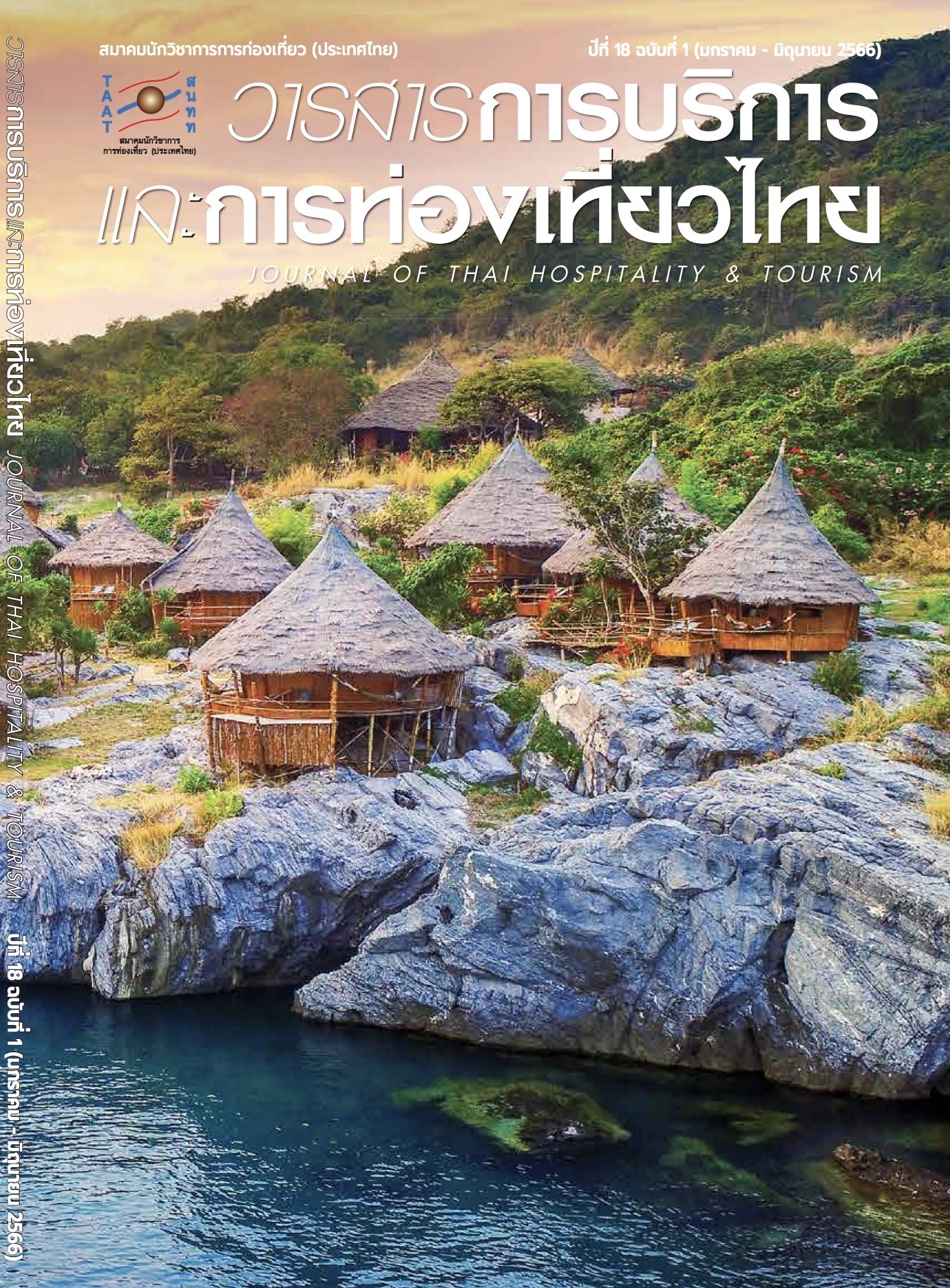Tourism Model of Lampang Cultural and Ceramic City
Main Article Content
Abstract
This research aimed to study the tourism awareness of tourists towards Lampang, a cultural and ceramic city, and synthesize tourism models for Lampang, a cultural and ceramic city, through the Business Model Canvas (BMC) process. The research tools consisted of a questionnaire, a structured interview, and a brainstorming form.
The research found that most of the tourists were females, teenagers, and early-working-age people. Most tourists know Lampang Province as a city of horse carriages and a city of ceramics. Some of the activities that they wanted to do when visiting Lampang included visiting temples, tasting local food, visiting local communities, visiting historic buildings and architecture, shopping at the walking street markets, and visiting ceramic production places. The awareness of tourists can be linked with the building blocks of the business model canvas of Lampang, the Cultural and Ceramic City. The main activities of this model were upgrading tourism while emphasizing delivering tourism value to tourists in the dimensions of the cultural city, the ceramic city, and the city of horse carriage. In addition, developing and promoting the ceramic industry as the main product of the province while preserving and continuing Lampang's horse carriage identity, which has been the only tourism identity in Thailand. Lastly, to develop infrastructure and facilities to support tourism in Lampang.
Article Details

This work is licensed under a Creative Commons Attribution-NonCommercial-NoDerivatives 4.0 International License.
References
Aaker, D. A. (1996). Measuring Brand Equity across Products and Markets. California Management Review, 38, 102–120.
Breckler, S.W. (1986). Attitude Structure and Function. Eribaum Association.
Brennan, S. (1990). Seeking and Providing Evidence for Mutual Understanding. Stanford University.
Bryman, A. (2004). Social Research Methods. Oxford University Press.
Clark, H. (1996). Using Language. Cambridge University Press.
Cohen, E. (1979). A Phenomenology of Tourist Experiences. Sociology, 13(2), 179–201.
Dourish, P. & Bellotti, V. (1992). Awareness and Coordination in Shared Workspaces. Proceedings of the 1992 ACM Conference on Computer–Supported Cooperative Work, Toronto.
Endsley, M. R. (1995). Toward a Theory of Situation Awareness in Dynamic Systems. Human Factors, 37(1), 32–64.
Guba, E. G. & Lincoln, Y. S. (1981). Effective Evaluation. Jossey–Bass.
Gutwin, C. & Greenberg, S. (1998). Effects of Awareness Support on Groupware Usability. Proceedings of the CHI ’98 Conference on Human Factors in Computing Systems, California.
Institute for Innovative Learning. (2020). What is Business model canvas and Value Preposition. https://bit.ly/3VgckgC
Integrated Provincial Administrative Committee (IPAC). (2017). Lampang Provincial Development Plan 4 Years. Lampang Provincial Governor's Office.
Jittangwattana, B. (2012). Tourist Behavior. Fern Khaluang Printing and Publishing.
Kaosa-ard, M., Sirisoontorn, S., Ratanawaraha, A., Saisingha, S., Potjanalawan, P., Poonkerd, J., Joompoo, C. & Wongsa, K. (2018). Cultural Tourism City Plan: Lampang Ceramic City. Thailand Research Fund.
Koffka, K. (1978). Encyclopedia of the Social Science. Macmillan.
Krajangchom, S., Maneetrakulthong, A. & Srichai, P. (2019). Guidelines for the Development of Tourism Activities for Senior Foreign Tourists in Lanna Civilization Zone. University of Thai Chamber of Commerce Journal, Humanities and Social Sciences, 39(3), 75–90.
McDaniel, S. E. & Brinck, T. (1997). Awareness in Collaborative Systems. SIGCHI Bulletin, 29(4).
Ministry of Tourism and Sports (MOTS). (2020). Domestic Tourism Statistics Q1–Q4 (Classify by Region and Province. https://www.mots.go.th/more_news_new.php?cid=521
Murphy, P. E. & Enis, B. M. (1986). Classifying Products Strategically. Journal of Marketing, 50(3), 24–42.
Pimonsompong, C. (2013). Tourism Market Planning and Development. Kasetsart University Press.
Pinkoon, D. (2015). Product Marketing. Damrong Pinkoon Publishing.
Pujinda, P. & Boonsom, Y. (2016). Urban Design Guideline for Specific Purposed Towns. Journal of Environmental Design, 3(1), 21–43.
Robbins, S. P. (2003). Organizational Behavior. Prentice–Hall.
Runes, D. D. (1971). Dictionary of Philosophy. Little Adam & Company.
Sangkakorn, K., Srichai, P., Krajangchom, S. & Auttarat, S. (2020). The Strategic Plan for Sustainable Urban Tourism Development to Support Thailand 4.0: Lampang Cultural and Ceramic Tourism City. Thailand Research Fund.
Schiffman, L. G. & Kanuk, L. L. (2004). Consumer Behavior. Prentice–Hall.
Silpcharu, T. (2010). Research and Statistical Analysis with SPSS. S.R. Printing Mass Product.
Sindecharak, T. & Kittirattanapan, W. (2022). Economic Import Evaluation from Tourism in Designated Area for Sustainable Tourism. Journal of Thai Hospitality and Tourism, 17(1), 34–45.
Sukkorn, K. (2019). Reviewing the Annual Plan 2019. http://www.lampang.go.th/stragegic/2560/file200960_02.pptx
Supasorn, Y. (2019). Thailand’s Tourism Outlook 2019. TAT Review, 5(1), 18–23.
Swarbrooke, J. (1998). Sustainable Tourism Management. CABI Publishing.
Yamane, T. (1967). Statistics: An Introductory Analysis. Harper and Row.


